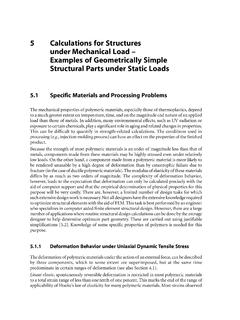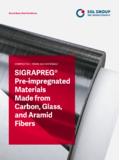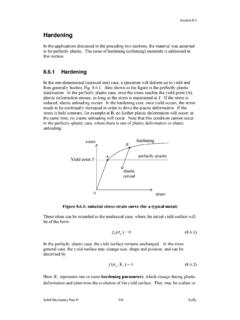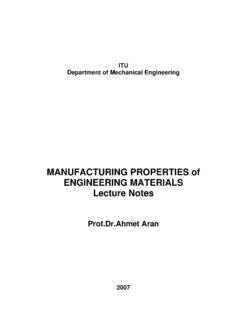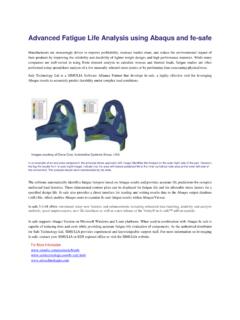Transcription of FAILURE OF CONCRETE UNDER UNIAXIAL …
1 Fracture Mechanics of CONCRETE Structures Proceedings FRAMCOS-3 AEDIFICATIO Publishers, D-79104 Freiburg, Germany FAILURE OF CONCRETE UNDER UNIAXIAL compression : AN OVERVIEW van Mier Faculty of Civil Engineering and Geosciences, Delft University of Technology, Delft, The Netherlands Abstract In the paper an overview of :fracture of CONCRETE subjected to UNIAXIAL compression is given. Since the past few years, attention for compressive fracture has increased, in particular when it was found that localization of defonnations occurs in UNIAXIAL compression experiments on prisms with varying height. In addition an enonnous dependency of post-peak behaviour on frictional constraint caused by some type of loading platens hampers the determination of a unique stress-strain curve for CONCRETE UNDER compression .
2 This implies that fracture mechanics principles apply. The :fracture process is complicated however because the amount of pre-critical crack growth is much larger than in tension, whereas frictional slip in cracks seems to contribute to the total compressive fracture energy as well. At this stage it is not clear which compressive stress-strain (or stress-displacement) diagram should be used for analyzing structures failing in compression . Keywords: UNIAXIAL compression , softening, standard test, meso-level FAILURE mechanism, localization, size effect, boundary constraint 1 Introduction After the development of the Fictitious Crack Model by Hillerborg and co-workers (1976), there have been decades of increased interest in fracture 1169 mechanics applied to CONCRETE , in particular for tensile states of stress.
3 As a result, the interest to study compressive FAILURE has dwindled, but seems to catch on again in the past few years. Knowledge of the compressive stress-strain curve is important when it comes to assessing the rotational capacity of reinforced CONCRETE beams. In many cases, when a non-linear finite element code is used, a complete constitutive law for CONCRETE UNDER multiaxial stress should be included. Many laws have been developed over the past years, from plasticity based theories, to plastic fracturing, endochronic, microplane model, and higher order continuum theories, see for example in Chen (1982) and Mtihlhaus (1995).
4 The finding that deformations localize in a narrow zone in (multiaxial) compression (in the brittle field, below the brittle-ductile transition, cf. Van Mier 1984) enforced a stop on the development of constitutive equations. Instead, the attention focused on modelling the (strain-) localization. The fracture process of CONCRETE UNDER UNIAXIAL and multiaxial compression (below the brittle to ductile transition) is a complicated three dimensional crack growth process. Obviously, many different mechanisms occur at the particle level -or meso-level -of the CONCRETE . These fracturing processes, as well as frictional effects and micro-plasticity events lead to a macroscopic non-linear stress-strain behaviour.
5 Fu the pre-peak part of the stress-strain curve, the energy dissipation from all these meso-level mechanisms is small compared to the total energy stored in the specimen, to allow for a continuum based approach. fu the post-peak regime, however, specimen-machine interactions and geometrical effects become important, and the use of 'strain' as state variable becomes highly debatable. In Figure I a separation between pre-peak stress-strain behaviour and post-peak stress-deformation behaviour is shown. stress preipeak 1un-f:racked1 conrete strain stress deformation Fig 1. Pre-peak stress-strain curve (a) and post-peak stress-deformation curve (b) for CONCRETE subjected to UNIAXIAL compression , after Van Mier et al.
6 (1997). 1170 Note that the terms 'un-cracked' and 'cracked' in Figure 1 refer to the macrocracks that are visible to the naked eye. Interactions with the experimental environment occur when the size of the cracks is comparable to the characteristic size of the specimen. Thus, for cases where the post-peak behaviour is expected to play an important role on the behaviour of a (reinforced) CONCRETE structure, complications arise. Hillerborg (1990) and Markeset (1993) were among the first to recognise the problem in assessing the rotational capacity of reinforced CONCRETE structures. The assessment of rotational capacity was brought in the realm of fracture mechanics.
7 In fact, Hillerborg proposed a model quite similar to the Fictitious Crack Model for tensile fracture. Although some progress has been made over the past two decades in the field of compressive fracture, it has to be seen whether a simplified fracture mechanics models is sufficient. Many details about the meso-level mechanisms remain to be solved. In this paper, a review of the mechanical behaviour of CONCRETE UNDER UNIAXIAL compression will be presented. After a discussion of stiffness and pre-peak crack processes, the specimen-machine interactions that become important near and after the stress peak will be debated.
8 The RILEM committee l 48ssc has proposed a new test method for the measurement of the complete compressive stress-'strain' curve. Although a test recorrnnendation has still to be written, some personal ideas about such a test will be included in this paper. In the discussion, mechanisms occurring at the particle level of the CONCRETE (meso-level) and at the macro-level (continuum assumption, which is true only if the size of the considered element is larger than 3-5 times the largest aggregate size in the material) will be considered. At meso-level, the material is regarded as a particle stack by some researchers, whereas others normally depict the material as 'aggregates swimming in a matrix'.
9 This latter view is popular because a planar section of CONCRETE shows the material in this way. Obviously the three-dimensional structure is hard to identify from sections. In the discussion it will be attempted to regard the material as 3D and the fracturing as a three-dimensional process. 2 Pre-peak behaviour In .this section it is attempted to summarize a number of ideas that exist about the pre-peak fracturing of CONCRETE at the rneso-and macro-level. If the material is described at the macro-level, basically the non-linear """' .. '""",.., .. must be incorporated in the constitutive equations. In that case the stress-1171 defonnation curve must be measured from a representative volume, which must be larger than a multiple of the largest aggregates in the mixture.
10 For a better understanding of the non-linear macroscopic behaviour, however, a rneso-level approach can be quite helpful, and may show the way to overcome difficulties that are apparent at the macro-level, in particular in the post-peak regime. At the rneso-level, the CONCRETE can be regarded in two different ways (although perhaps other approaches may exist which are overlooked at the moment). The first and most popular meso-level model is shown in Figure 2a. Aggregates swim in a matrix of cement matrix (also containing small sand particles), and an interfacial transition zone encloses the larger aggregates.

